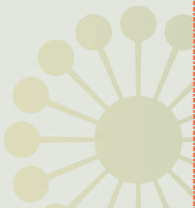LIMINALITY The early Celtic peoples have always had a great respect for the natural world. They saw God in rocks and trees, in animals and flowers. Their world was filled with spirits, elves, fairies, leprechauns, and other creatures that inhabit the middle earth between the familiar and the magical, between our physical world and the spiritual realm. Their religious leaders, the “vision-poets,” were able to see beyond our dimension into the spiritual world. They recognized that there are “thin places” in life when the veil between our normal existence and other worlds becomes so transparent that we can see beyond our limits of sight and sound. Certain persons—shamans, priests, and others—had the power to walk between worlds, or at least bridge the gap between the natural and the supernatural. The high priest of the ancient Romans was known as Pontifex Maximus, the chief “bridge builder” between humans and the gods, between the physical and the spiritual. When Christianity superceded the Roman pagan worship, the title passed to the bishop of Rome who is still called the “Pontiff.” The thin places were not only locations in space, but also in time. It was the time of day that the Celts called the “gloaming” or dusk. It was a transitional time between the activities of the day and the quiet rest of evening as one consciously put aside the tools of labor and engaged in the more difficult work of caring for one’s soul, of tending to relationships, of embarking on voyages of fantasy and exploring the landscape of dreams. The anthropologist Victor Turner, borrowing from the work of the French ethnographer Arnold van Gennep, talks about “liminal states,” the “betwixt and between” transitional state when one moves from one part of life to another. There are many types of liminal states when one stands upon the threshold and can look back to the past or forward to the future, as Balboa did upon that “peak in Darien.” The Academy of Spirituality and Paranormal Studies, Inc. is interested in looking beyond the veil, even as we examine that state of liminality in which persons are separated from the context of this life, are caught in the in-between state, and finally arrive at a state where they become aware of a new realities. We find descriptions of this liminality in the religious traditions of many cultures. The Tibetan Bardo Thodol identifies six bardos or liminal states as one awakens from life and grows conscious of another existence. The Egyptian Book of the Dead describes the journey of the life force (ka) to reunite with the soul (ba) to form a new entity (akh) in the afterlife. The ancient Greeks had the souls of the dead cross five rivers, boundaries of separation, in which portions of earthly existence are left behind. In the twenty-first century we continue to explore the threshold of the after-life, building upon the wisdom of the past and adding our own experiences, insight, and discoveries in the growing awareness that there is so much more beyond. Dr. Harry L. Serio |
|
